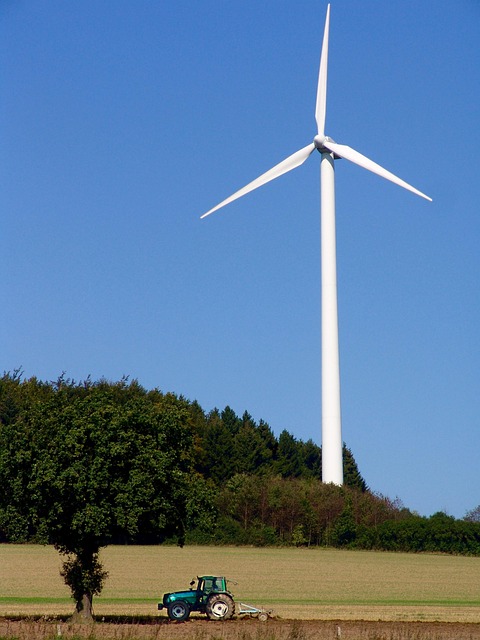Innovative Technologies Shaping the Future of Renewable Power
The quest for sustainable energy solutions has never been more urgent. As the world grapples with the realities of climate change and dwindling fossil fuel reserves, the emphasis on renewable energy sources has reached a critical juncture. The transition from traditional energy systems to a more sustainable approach is being greatly influenced by innovative technologies. This article delves into some of the cutting-edge advancements that are poised to reshape the renewable power landscape, making it more efficient, cost-effective, and viable for a global transition.
The Rise of Solar Photovoltaics
Solar energy has emerged as one of the frontrunners in the renewable sector, driven by significant technological advancements in solar photovoltaics (PV). The development of multi-junction solar cells, for instance, has enabled the harnessing of a broader spectrum of sunlight, thus maximizing energy conversion efficiencies. While standard silicon-based cells typically reach efficiencies of around 20%, multi-junction cells can exceed 40%. This leap in performance signifies a monumental shift in how solar energy can be harvested and utilized.
Furthermore, the advent of bifacial solar panels, which generate electricity from both sides, has revolutionized installations, allowing for increased output without proportional increases in land usage. These innovations, coupled with decreasing manufacturing costs, imply that solar energy will continue to proliferate on rooftops and large-scale solar farms around the globe.
Advancements in Energy Storage Solutions
As renewable energy sources like solar and wind are inherently intermittent, robust energy storage solutions are critical for maintaining grid stability and ensuring a reliable power supply. Technologies such as lithium-ion batteries have gained prominence due to their high energy density and declining costs, making them suitable for everything from residential energy storage units to large-scale industrial applications.
However, innovation does not stop with lithium-ion technologies. Research into solid-state batteries offers the potential for even greater safety and efficiency. Compared to their liquid counterparts, solid-state batteries can deliver higher capacities and charge more rapidly while minimizing safety risks associated with flammability. Additionally, newer materials such as sodium-sulfur and flow batteries are emerging as alternative storage solutions, enhancing accessibility for renewable energy participants worldwide.
Wind Energy Innovations
Wind energy has also experienced significant technological advancements, enhancing its viability as a reliable renewable power source. The development of larger, more efficient wind turbines has been a game-changer. Today’s turbines can harness stronger winds at higher altitudes, translating to increased energy production. Innovations such as floating wind farms have opened the door to offshore installations, where winds are typically stronger and more consistent than on land.
The integration of AI and machine learning into wind turbine operations has further optimized energy production. Predictive maintenance algorithms can analyze data from turbines in real-time, identifying potential issues before they lead to failures. This predictive capability can significantly reduce maintenance costs and downtime while ensuring that turbines operate closer to their maximum capacity.
Smart Grids and Energy Management Systems
The development of smart grid technologies is transforming how energy is generated, distributed, and consumed. Smart grids leverage digital communication technologies to enhance the flow of data between producers and consumers. This real-time data enables more efficient energy management and consumption practices, facilitating the integration of renewable sources into existing infrastructure.
Energy management systems (EMS) are central to these innovations, empowering both residential and commercial consumers to make informed decisions about their energy usage. Through applications that analyze energy consumption patterns, users can adjust their usage to take advantage of off-peak periods or to utilize renewable energy sources whenever possible. This creates a more dynamic and responsive grid that reduces reliance on fossil fuels.
Hydrogen as a Renewable Energy Carrier
Hydrogen has gained increasing recognition as a versatile energy carrier, particularly in the context of renewable energy. The process of green hydrogen production involves using renewable energy sources to electrolyze water, separating hydrogen from oxygen. This hydrogen can then be stored and used either directly as a fuel or transformed into other energy forms, such as electricity or heat.
Innovations in electrolyzer technologies are critical to making green hydrogen economically viable. Improvements in electrolyzer efficiency and cost reduction are key areas of research, aiming to scale production while driving down prices. The potential of hydrogen to decarbonize sectors traditionally reliant on fossil fuels, such as heavy industry and transportation, positions it as a cornerstone of future energy systems.
Bioenergy and Waste Conversion Technologies
Bioenergy, derived from organic materials, plays a crucial role in the renewable energy mix. Innovations in waste conversion technologies enable the transformation of agricultural, municipal, and industrial waste into valuable biofuels. Techniques such as anaerobic digestion and gasification are increasingly employed to generate biogas, which can be used directly for heating or converted into electricity.
The promise of second and third-generation biofuels, produced from non-food biomass and waste materials, further underscores the potential of bioenergy to offset reliance on traditional fuels. Algae-based biofuels, for instance, are drawing interest as they offer high yields and can be cultivated on non-arable land, making them an attractive option for sustainable energy.
Geothermal Energy Advances
Geothermal energy harnesses heat from the Earth’s core to generate electricity or provide direct heating. Innovative drilling techniques and enhanced geothermal systems (EGS) are making this form of renewable energy more accessible. EGS utilizes technology to create artificial reservoirs in hot rock formations, allowing for efficient extraction of heat even in locations where conventional geothermal resources are not available.
Moreover, the integration of geothermal energy into smart grid systems can help balance supply and demand, providing baseload power that complements intermittent sources like wind and solar. As research continues to push the envelope in geothermal technologies, the role of geothermal energy in the renewable power landscape is set to expand significantly.
The Role of Policy and Investment
While technological innovations are crucial in shaping the future of renewable power, supportive policies and investments are equally essential for driving transition. Governments worldwide are establishing frameworks to incentivize renewable energy development, including tax credits, feed-in tariffs, and carbon pricing mechanisms. These policies create stable conditions for private investors and companies to innovate and deploy renewable technologies on a larger scale.
Public and private sector partnerships are also instrumental in funding research and development initiatives aimed at reducing costs and improving efficiencies. The collaboration of universities, research institutions, and energy companies fosters an environment conducive to groundbreaking discoveries and advancements in renewable technologies.
Conclusion
As the global community faces pressing environmental challenges, innovative technologies are leading the way toward a sustainable energy future. From advancements in solar photovoltaic cells and energy storage solutions to the rising potential of hydrogen and smart grid systems, the renewable energy landscape is experiencing a transformation that promises enhanced efficiency and accessibility. Continued investment and supportive policies will be essential in harnessing these innovations to create a greener, more resilient world, ensuring that renewable energy sources play a pivotal role in our energy systems for generations to come.



